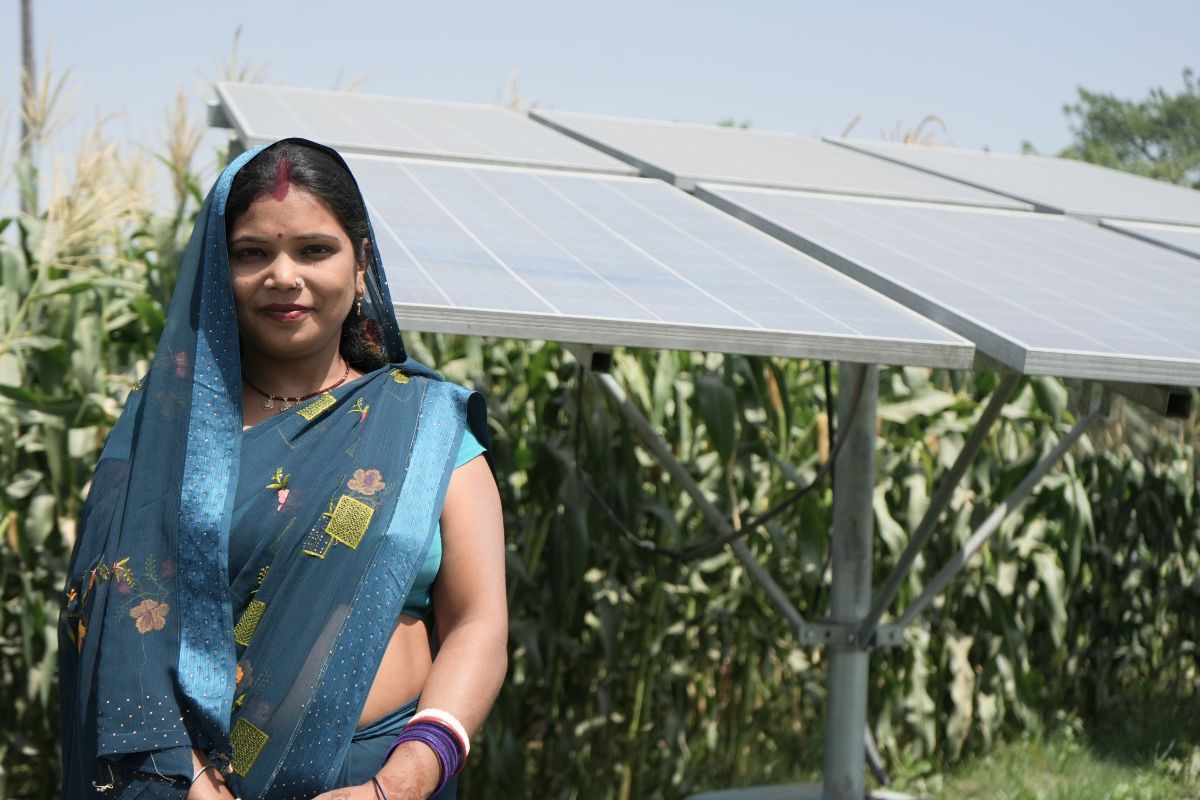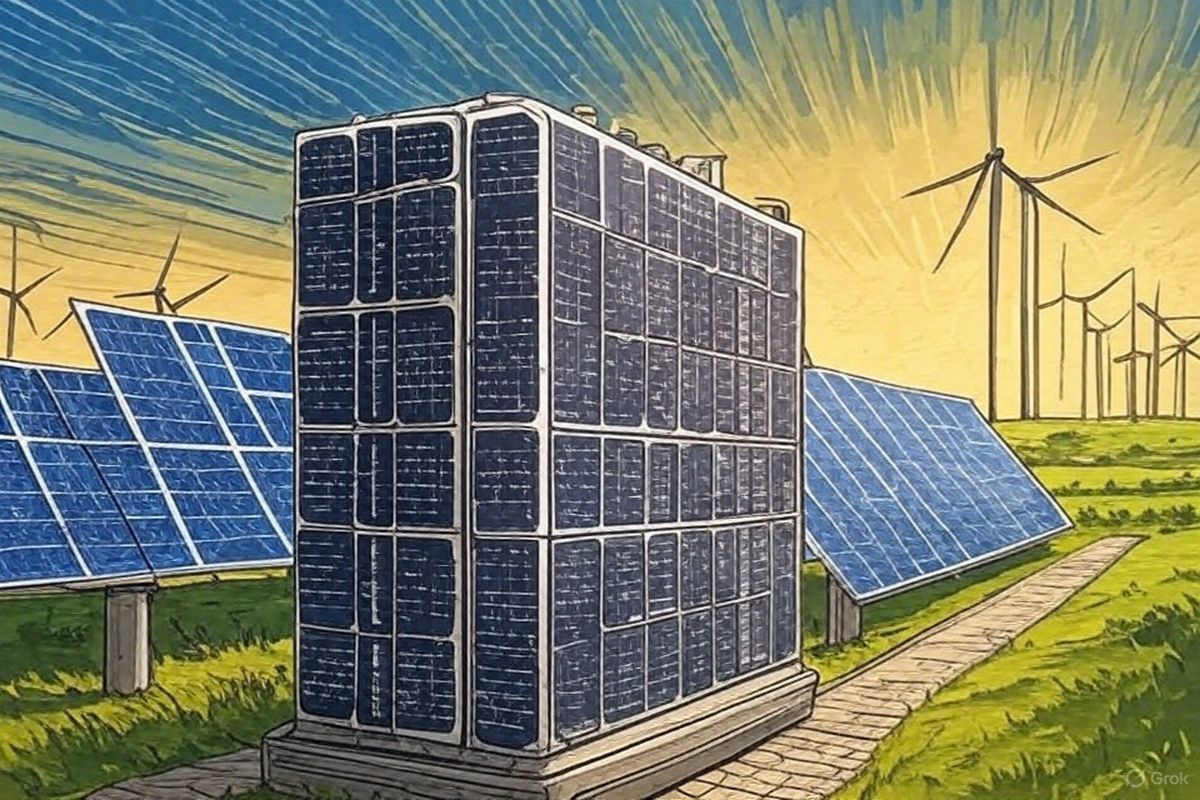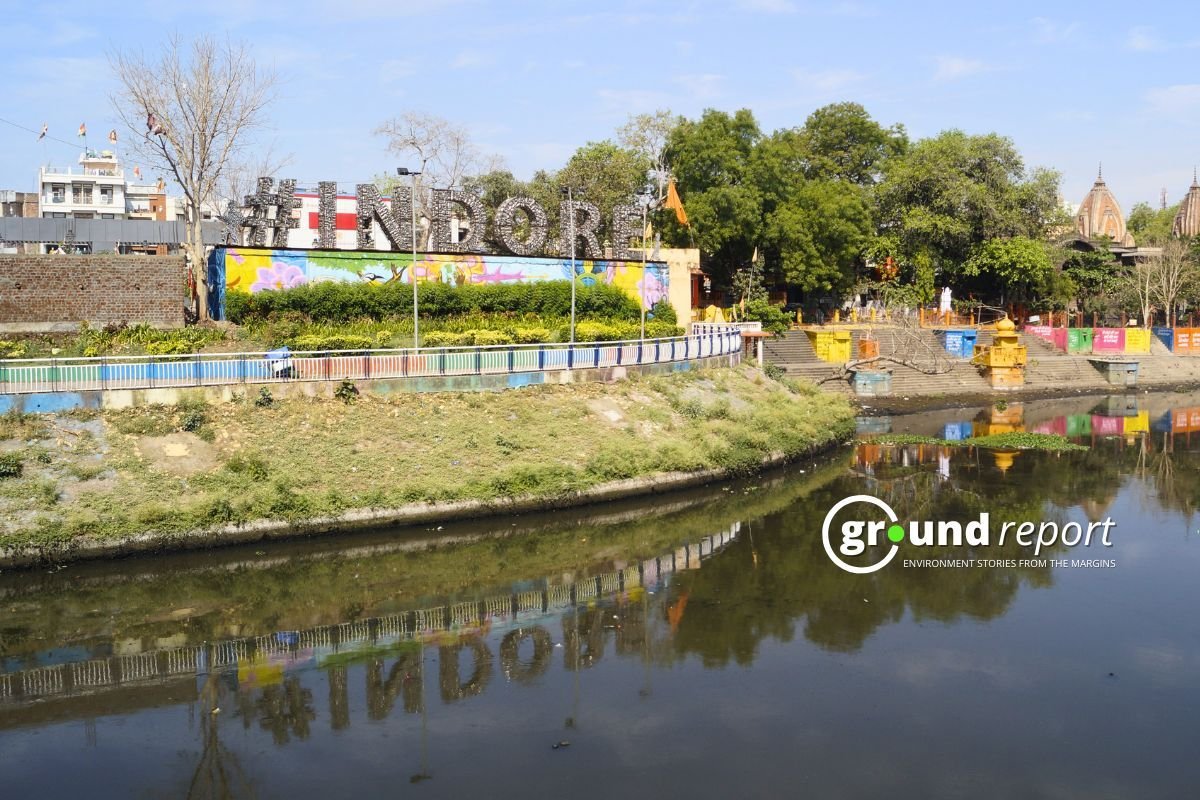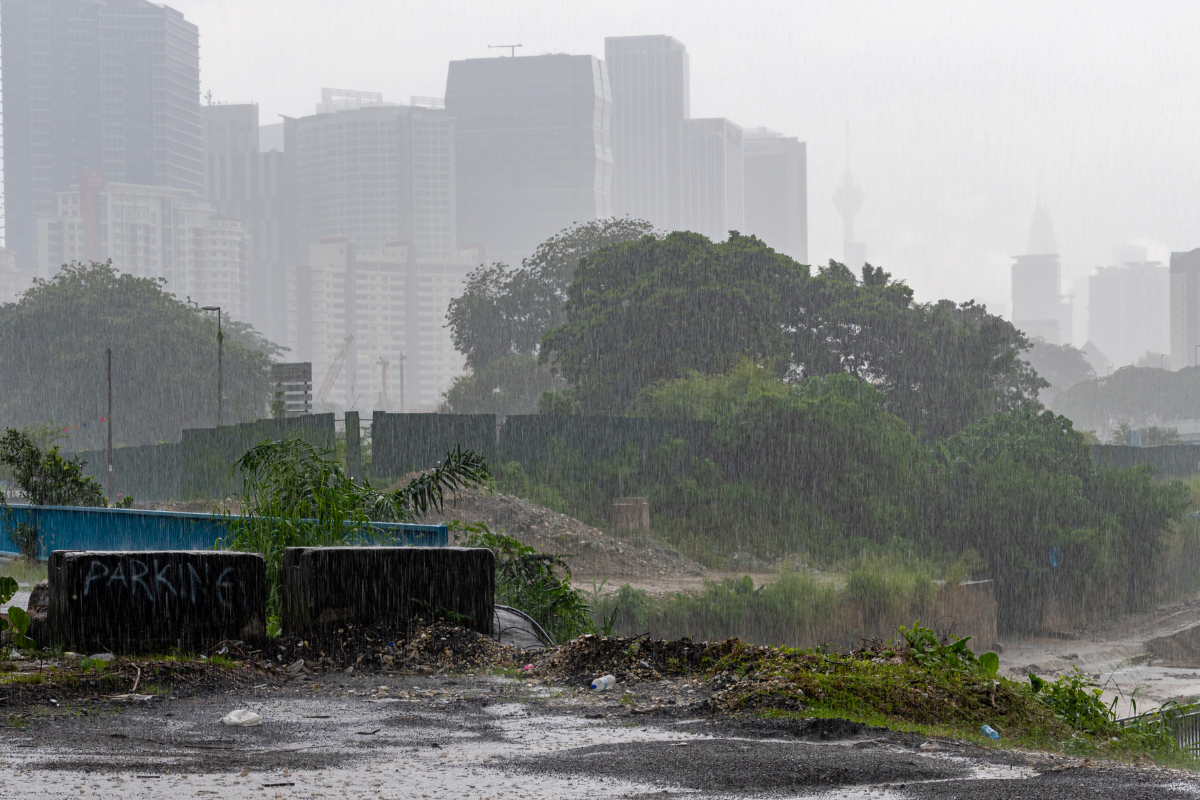Janaki Devi, Anu Devi, and Usha Devi have more in common than just their last name—they share a profession. These three women, along with over 30 others, sell irrigation water powered by solar pumps. Mostly living in the Muzaffarpur district of Bihar, they have transitioned from being housewives to entrepreneurs.
On a hot June morning, 30-year-old Anu Devi leaves her home in Sharfuddinpur village, Bochacha block, and heads to her small farm. On her 2.5 katha farmland stand four large blue shining rectangular solar panels and a cemented room housing a submersible pump.
“I’m here to start the pump to supply water to a farmer who needs a few hours of water for his maize crop,” says the mother of two.
Anu is using solar power to achieve economic independence by selling water to local farmers. She sells water at Rs 100 per hour to over 30 farmers. Solar pumps are not only providing climate benefits but are also boosting women’s income and confidence. This technology is helping women challenge traditional gender norms and become more empowered in their communities.
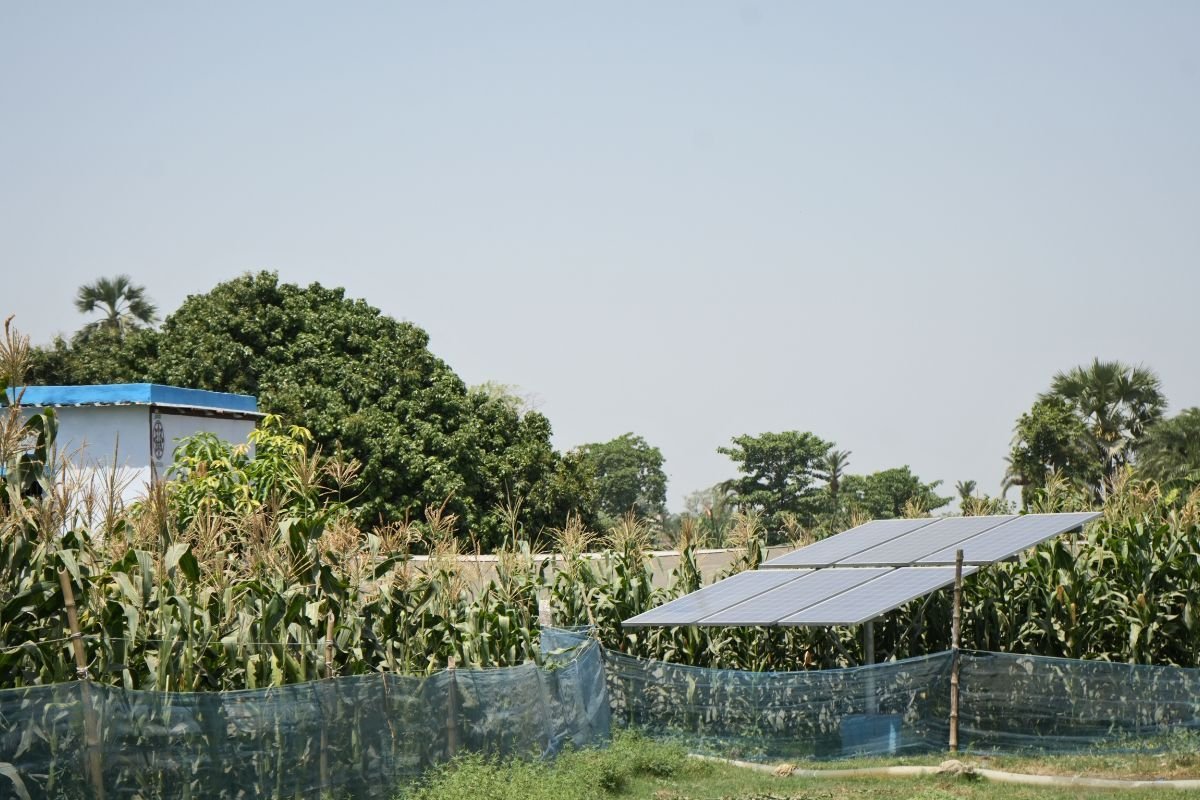
In Bihar, women farmers are transforming their lives with solar-powered irrigation pumps, supported by the Bihar Rural Livelihoods Promotion Society (JEEVIKA) and funded by the Aga Khan Foundation, a not-for-profit organization. Subhajit Pati of the foundation shares,
“Women beneficiaries must be part of Jeevika. This irrigation entrepreneurship helps women overcome water scarcity, diversify crops, and generate income.”
Anu earns around Rs. 10,000 to 15,000 by selling water, and this financial security has empowered her to become a decision-maker within her family. Her husband, Manish Kumar Chowdhary, shares with pride,
“We use the money for our children’s education and household expenses. Beyond financial benefits, my wife’s entrepreneurial journey has boosted her confidence.”
The simple push-button technology of solar pumps empowers housewives, providing sustainable water sources and challenging traditional gender roles in rural agriculture.
Anu shares, “I received solar panels, a 5HP submersible pump, and initial implementation support through the Aga Khan Rural Support Programme-India. However, I had to pay for the borewell digging and the construction of a room for the pump.”
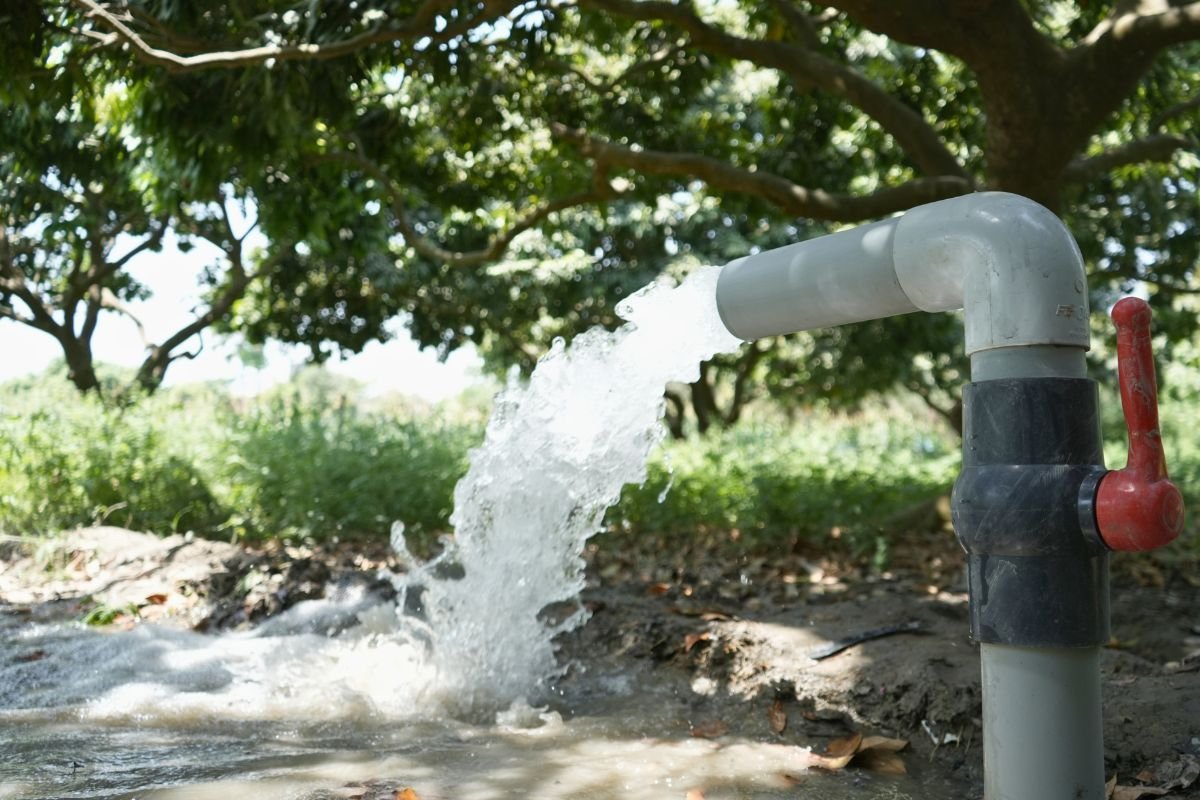
Why Solar irrigation pumps?
Electricity scarcity, unreliable monsoon rains, and high diesel and grid pump costs pose economic risks to small farmers in India. Global warming, competitive land use, and inadequate infrastructure add to their challenges. The growing energy demand-supply gap, especially in remote areas, forces farmers to use alternative fuels like diesel for irrigation.
“High electricity bills and diesel costs led me to buy solar-powered irrigation water from Anu Devi. For a small farmer like me, the cost of Rs. 100 per hour is ideal,” says Vishal Jaiswal, who grows cash crops and vegetables year-round.
According to reports, India uses 12 million grid-based electric and 9 million diesel irrigation pump sets. However, high operational costs force farmers to practice deficit irrigation, reducing crop yield and income. The country has 26 million groundwater pump sets, mainly powered by electricity from coal-fired plants or diesel generators. Agricultural irrigation accounts for 25% of India’s electricity use, consuming 85 million tons of coal annually, and 12% of its diesel consumption, over 4 billion liters. Replacing 1 million diesel pumps with solar pumps could save 9.4 billion litres of diesel, reduce the carbon footprint of Indian agriculture, and bolster the country’s fight against climate change.
Solar water pumping systems are a cost-effective alternative to traditional irrigation methods. Solar Photovoltaic (SPV) sets are environmentally friendly and low-maintenance, with an estimated potential of 9 to 70 million units in India, saving at least 255 billion litres of diesel annually. SPV irrigation is gaining traction as an eco-friendly method. Besides Bihar, farmers in Haryana, Punjab, Rajasthan, Dadra & Nagar Haveli, and Daman & Diu are adopting solar-powered pumps. Reports indicate that by 2026, over 3 million farmers in India will use solar-powered pumps for irrigation, significantly transforming their lives.
Reports point out that by 2026, more than 3 million farmers will be raising irrigation water from beneath their fields using solar-powered pumps in the country. With effectively free water available in almost unlimited quantities to grow their crops, their lives could be transformed. Until the water runs out.
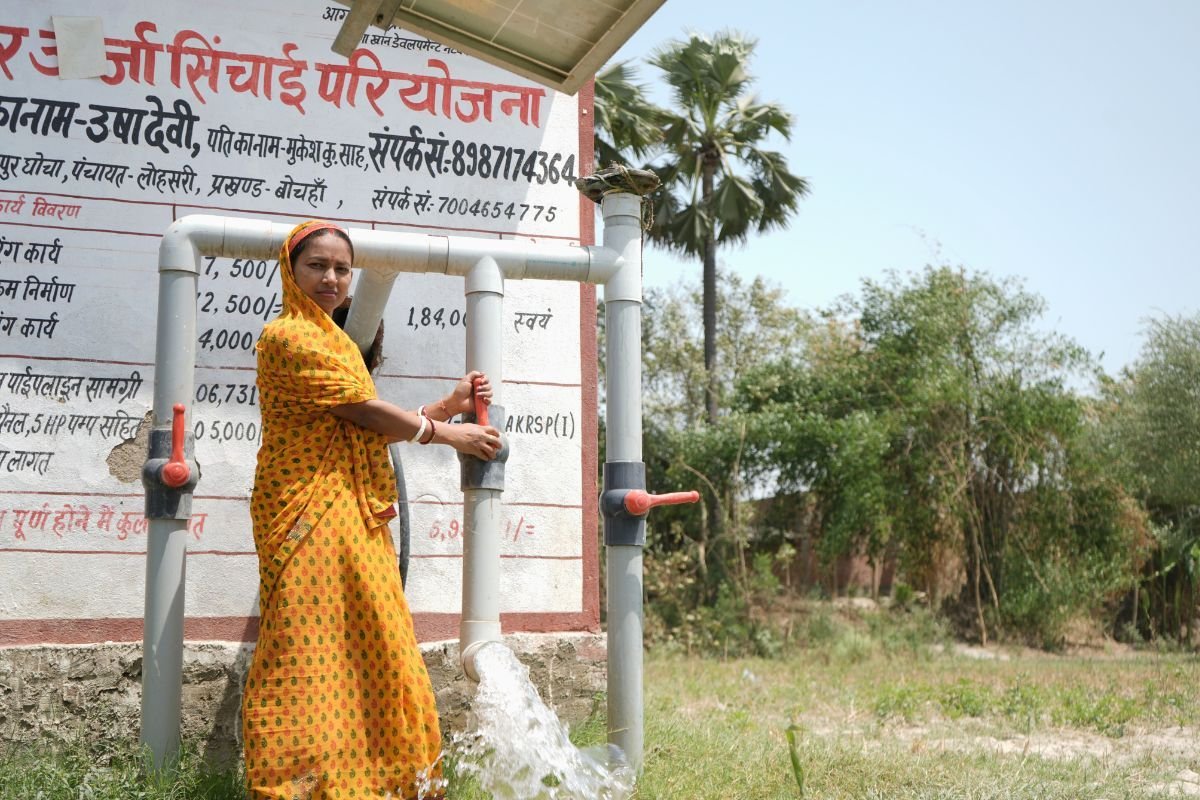
Future groundwater crisis?
Another woman farmer highlights the ease of operating a solar-powered pump—“I just need to push the start button, and water gushes out of the PVC pipe attached to the machine,” explains Janaki Devi from the Bochaha block of Muzaffarpur district. A long plastic pipe directs the water to her beneficiary farmers’ fields. While the process is simple and cost-effective, experts warn that overuse of groundwater could become problematic in the long run.
The desert state of Rajasthan leads India in solar pump adoption, with over 100,000 farmers receiving subsidized solar pumps in the past decade. These pumps now irrigate over a million acres, increasing agricultural water use by more than 25%. However, this has caused water tables to fall rapidly due to insufficient rainfall to replenish the groundwater. In some areas, underground rocks dry down to 400 feet. Due to depleting groundwater levels, these pumps are no longer effective for many farmers in Rajasthan. As a result, many farmers are repurposing or selling the solar panels.
In Bihar, sustainable and controlled use of groundwater should be followed. “As the solar-powered pump method of irrigation is new and catching up in the state, farmers and water sellers should follow the rules of groundwater use set up by the government so that we don’t repeat the mistake of Rajasthan,” says Ashok Ghosh, groundwater expert and former Chairman of the Bihar State Pollution Control Board.
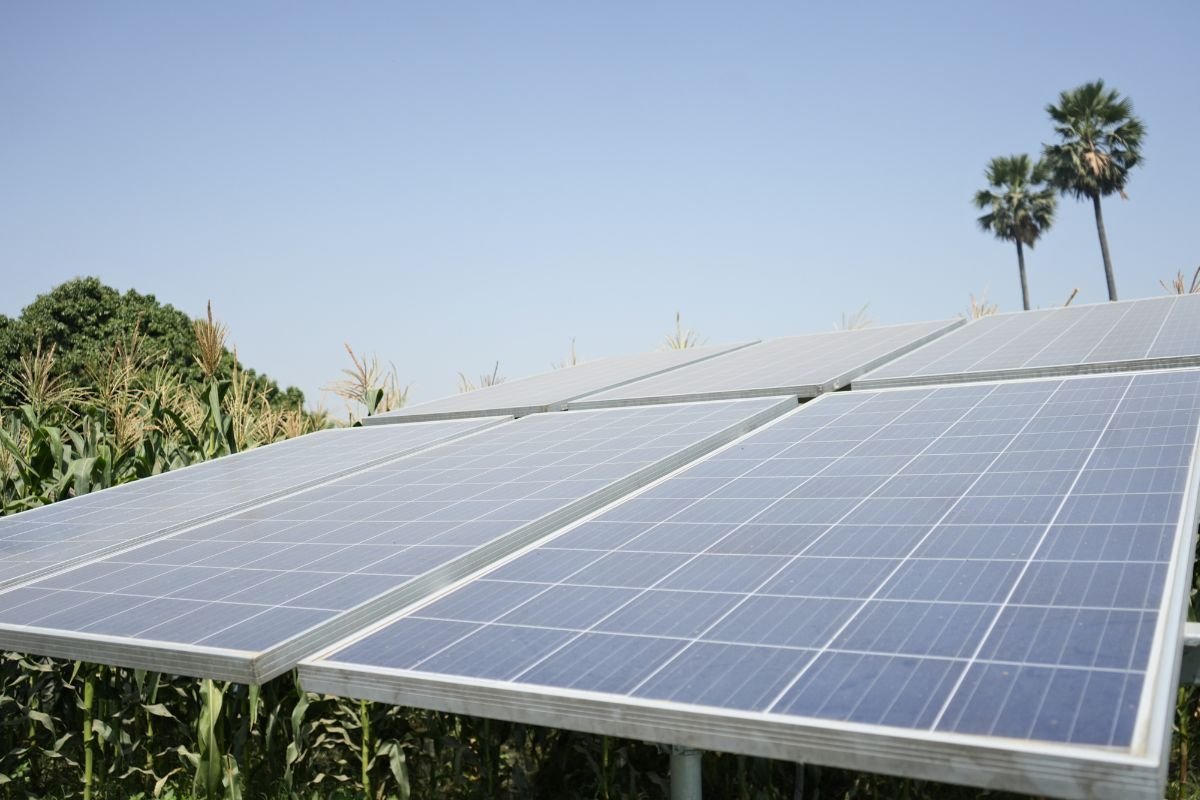
He predicts that by 2030, Bihar will face severe groundwater depletion due to over-reliance on groundwater for irrigation and the effects of climate change.
Reports indicate that although North Bihar is rich in rivers and prone to floods, climate change and erratic rainfall are causing extended dry spells, drying up river water. The region is drained by rivers like Saryu, Gandak, Burhi Gandak, Bagmati, Kamla-Balan, Kosi, and Mahananda, along with their tributaries.
In South Bihar, the traditional Ahar Pyne irrigation system is declining due to modernization and the lack of integration between old and new systems. Consequently, farmers are increasingly relying on bore wells, which deplete groundwater.
Meanwhile, in Sharfuddinpur Village, Anu Devi presses the red button of the submersible pump and says, “Time’s up for now. The farmer only needed two hours of water for his maize farm, and I don’t want to waste any.” She notes the time in her paper logbook and heads home to cook lunch for her family. “We are mothers and should know how to juggle our business and home,” says the 32-year-old, adjusting the blue saree that covers her head as a veil.
This story was supported by Earth Journalism Network’s Renewable Energy in India Grant 2024
Support us to keep independent environmental journalism alive in India.
Keep Reading
What is Green Hydrogen? Could it change energy in South Asia?
Blue hydrogen is worst for climate: study
How Increasing space traffic threatens ozone layer?
Hydro Fuel Market: India’s current scenario and the future ahead
Natural Gas is a Misleading term, It is not Natural and clean at all
Follow Ground Report on X, Instagram and Facebook for environmental and underreported stories from the margins. Give us feedback on our email id greport2018@gmail.com.
Don’t forget to Subscribe to our weekly newsletter, Join our community on WhatsApp, and Follow our YouTube Channel for video stories.
